Ernie Button: En sus propias palabras
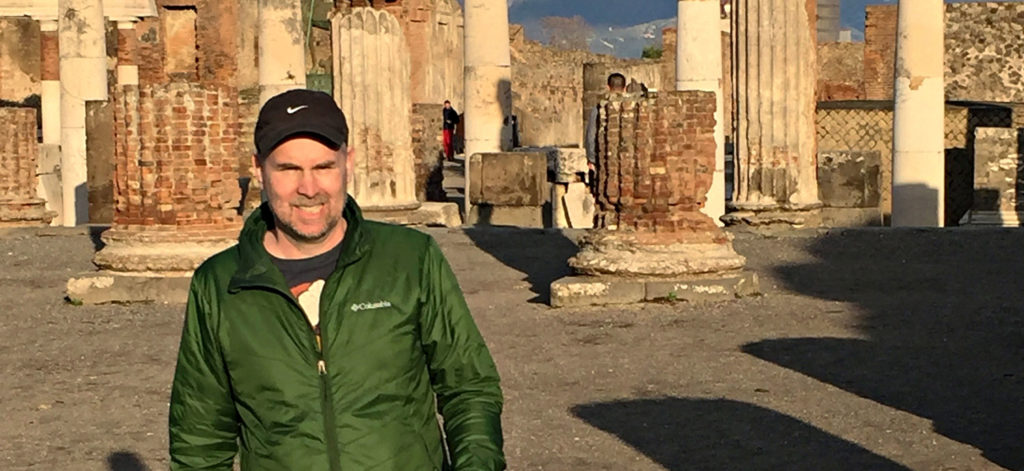
Nov, 22, 2022
ArtistasComunidadPhxArtista Destacado
Ernie Button: En sus propias palabras
Have you ever finished a drink and wondered about the patterns left at the bottom of your glass, or considered where all those coin-operated rides we used to see outside of grocery stores have run off to? Well, Valley-based artist Ernie Button has, and he has spent multiple years exploring these subjects, along with other objects and phenomena that go unnoticed or forgotten.
We spoke with Ernie to learn more about his inspirations and projects that have landed him in publications from The New York Times to National Geographic. Here he is, in his own words, on his preferred medium, his artistic influences, and more.
“[P]hotography has provided me a medium to communicate my past and present, my humor and concerns, and my observations and explorations.”
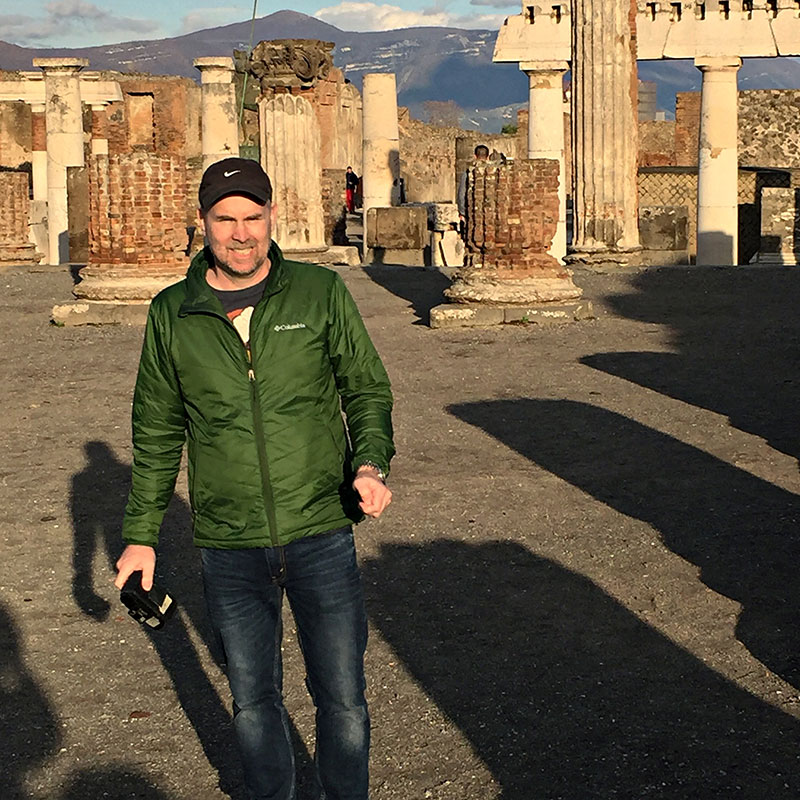
Ernie Button, Self-portrait, 2017. Photo: Melissa M. Button.
PhxArt: Tell us about who you are and where you’re from. What was your first inspiration, and what continues to inspire your work?
Ernie Button: I have been a resident of the Phoenix Metro Area for over 45 years. I have always been interested in the creative arts, from writing, to performing, to music. I have been involved in photography since my early teenage years. However, I didn’t really know anything about the art world until my wife went to graduate school for fine art painting. Her experience there opened my eyes to the art world, which fascinated me. Since that time more than 20 years ago, I have been exhibiting my work, showing and sharing my photography as much as time will allow.
PhxArt: What are the media that you prefer to work in, and what topics and styles do you focus on?
EB: I consider myself a photographer that has dabbled in other forms of print media, like printmaking. For most of my adult life, photography has provided me a medium to communicate my past and present, my humor and concerns, and my observations and explorations. Although my subject matter varies, my images tend to focus on the individual nature of objects (and occasionally people) and the unique qualities that each possesses. My images often provide a voice to objects that are overlooked or taken for granted.
Some standout projects for me include Back and Forth, which documents the disappearing coin-operated grocery-store ride; Riding Through Lishui, which documents my travels through the streets of Lishui, China, where coin-operated grocery-store rides line the city streets; and Cerealism, which features portraits and landscapes created with breakfast cereal. Also of note is Vanishing Spirits: The Dried Remains of Single Malt Scotch. After a person has enjoyed the last drop of Scotch Whisky, the liquor’s residue leaves fascinating patterns in the bottom of the glass, which I then photograph. I have been exploring this topic for 15 years now, and the project has evolved from straight documentation to experimentation to celestial representation.
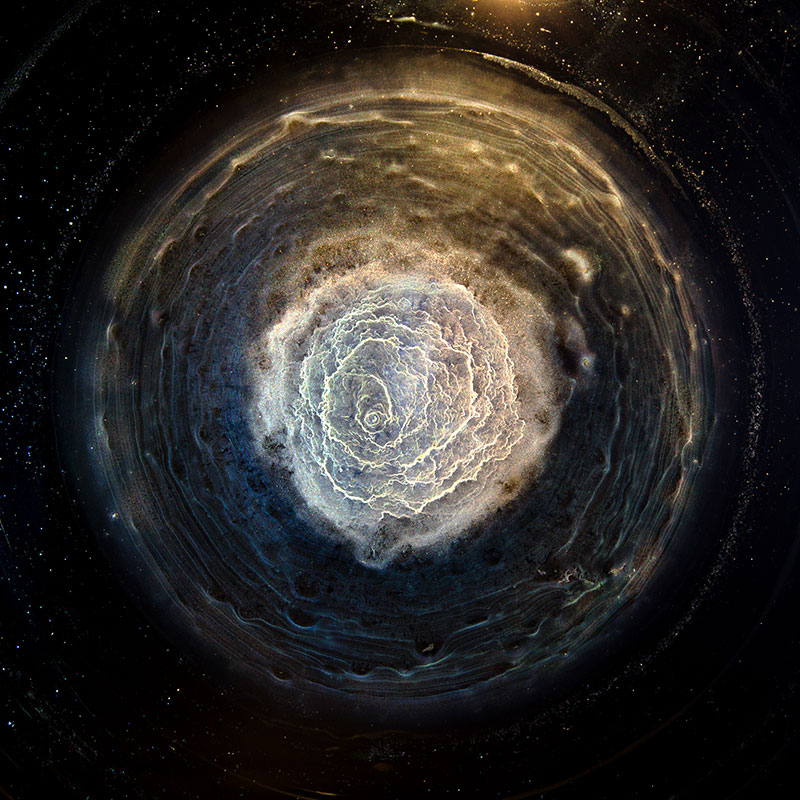
Ernie Button, Macallan 150, 2012. Archival pigment prints. Courtesy of the artist.
PhxArt: How has your practice evolved over the years?
EB: I have a full-time job outside of photography, which allows me to create the projects and images that I want. However, there is not always enough to time to create and explore as much imagery as I would like. So, over the years, I’ve had to be more focused on a project and be more organized with my time.
PhxArt: Who are your greatest artistic influences?
EB: I am constantly inspired by the talent and positive attitude of my wife. Other artists who inspire me include Leonardo da Vinci, Michelangelo, Picasso, Michael Kenna, Keith Carter, Richard Misrach, Todd Hido, Greg Crewdson, Shana and Robert ParkeHarrison, Lori Nix, Susan Burnstine, Albert Watson, Odd Nerdrum, and Zaha Hadid.

Ernie Button, Capitol Mount Rushmore, 2012. Archival pigment prints. Courtesy of the artist.
PhxArt: Tell us about your work as a teacher. What first inspired you to become an arts educator, and how does this work inform your personal practice?
PS: I am an information sponge and a curious person. I am very enthusiastic about art, culture, ceramics, and sharing my enthusiasm. I like getting people excited about ideas and art that I love and learning from my students. I love the problem-solving involved with teaching art and the endless iterative creativity demonstrated by artists. Every semester, I choose a different area of my field as a focus. Creating the assignments and lectures focusing on the chosen topic is endlessly stimulating.

Ernie Button, Planet Macallan 101, 2015. Archival pigment prints. Courtesy of the artist.
PhxArt: What’s something you’re currently working on or have recently exhibited?
EB: Vanishing Spirits has been an internationally recognized project featured in such publications as The New York Times, National Geographic, Smithsonian Magazine, NPR, Huff Post, Wired, and Esquire. It is an ongoing project of never-ending fascination to me. It is an ongoing project of never-ending fascination to me. Images from this project have been collected into a book called The Art of Whisky which was released in May 2022 by Chronicle Books. I’m very, very excited for it to be in the world.
Recently, I’ve been experimenting with a Japanese rice-based whisky by the name of Shibui. Because of the different grain used compared with Scotch (which is made with barley), the resulting patterns yield very different, much more organic patterns than the more rhythmic and repetitive patterns of Scotch.
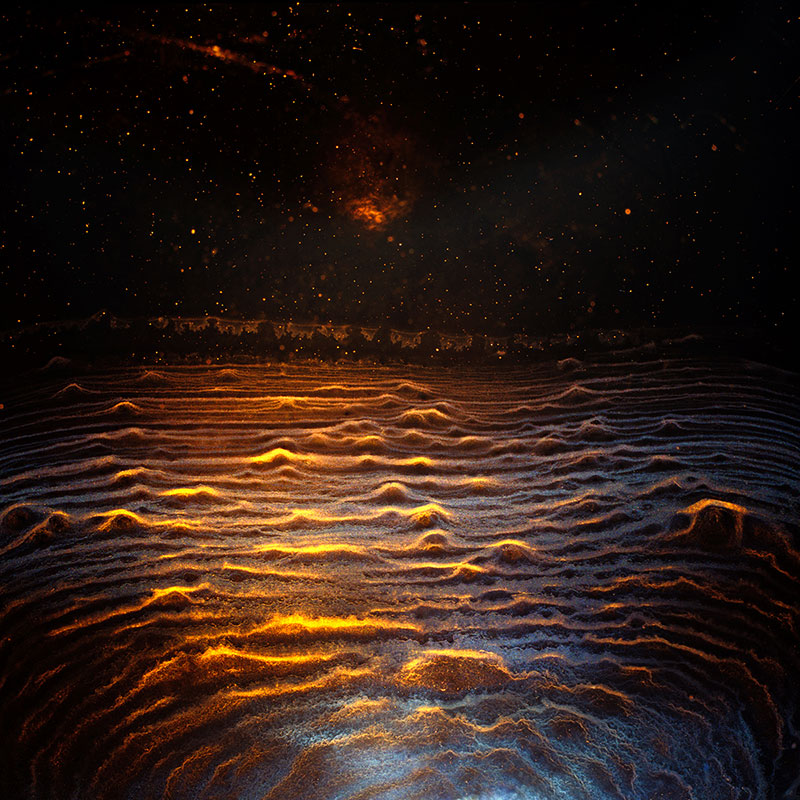
Ernie Button, The Glenlivet 162, 2004. Archival pigment prints. Courtesy of the artist.
PhxArt: What is some advice you’d give to aspiring artists just beginning to build their professional practice?
EB: Most of what I’ve picked up throughout my time on this earth has been more practical life advice, most of which can be applied to making art.
- Work hard at everything you do.
- Everything in moderation, i.e. strive for balance.
- There is always someone working harder than you.
- Invest money at an early age and take advantage of compounding interest.
- Success comes in cans, not cannots.
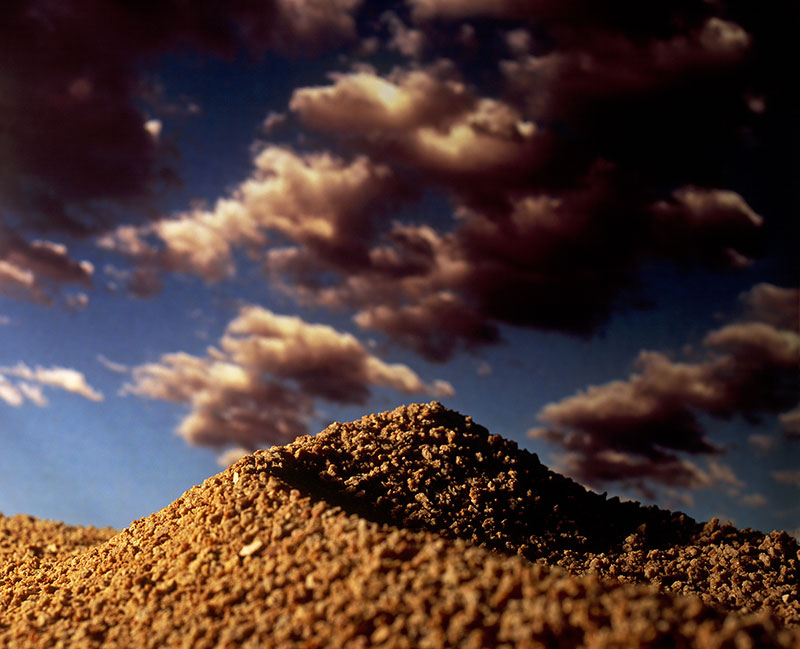
Ernie Button, Grape Nuts Dune #9, 2004. Archival pigment prints. Courtesy of the artist.
SEE MORE
To see more artwork by Ernie Button, visit www.photoeye.com/erniebutton or follow him on Instagram @erniebutton. To learn more about his Vanishing Spirits project, follow @vanishingspirits_erniebutton.
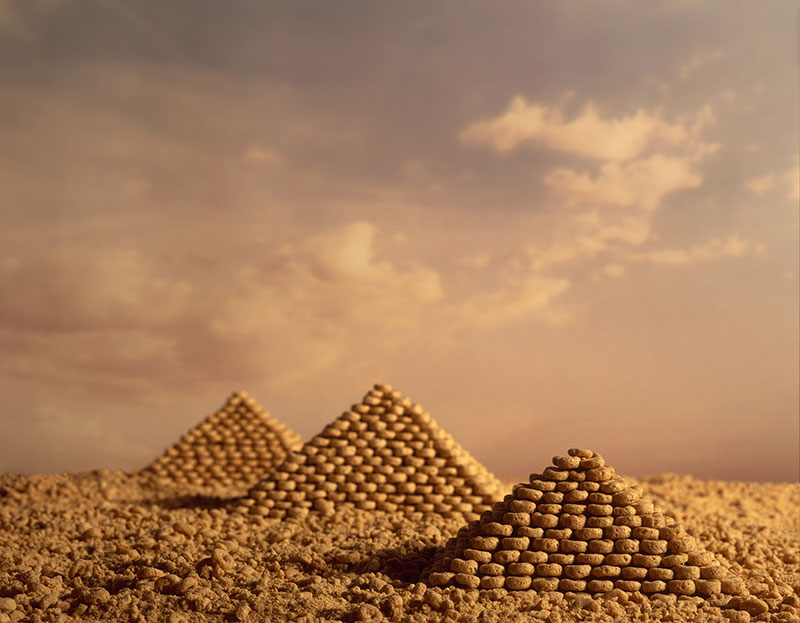
Ernie Button, Cheeramids #3, 2004. Archival pigment prints. Courtesy of the artist.
Categories
What can we help you find?
¿Necesitas más ayuda?
Llame a Servicios para visitantes al 602.257.1880 o envíe un correo electrónico